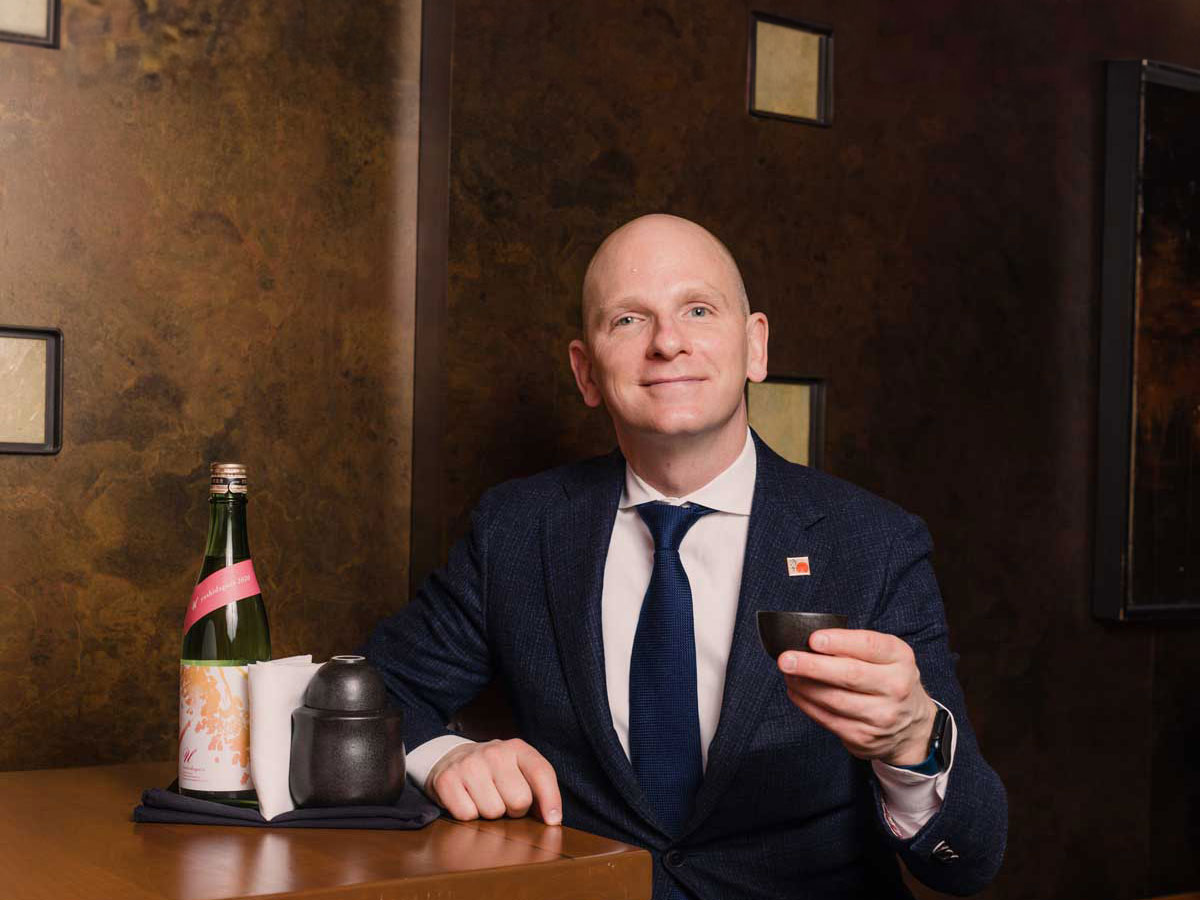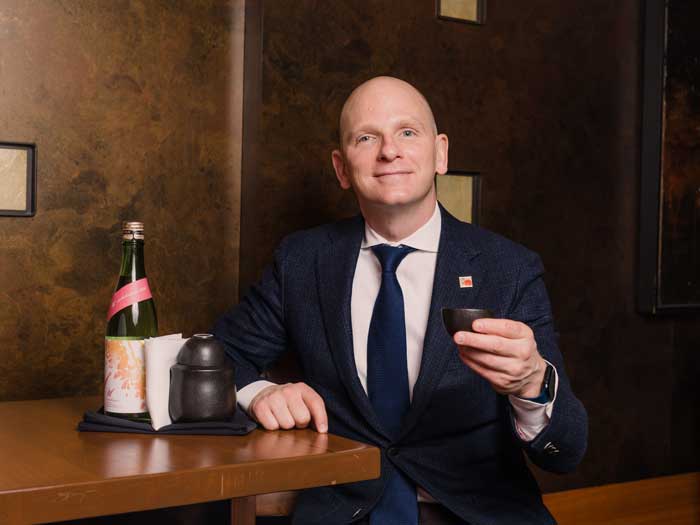
Sake is a serious contender for the world’s next spirit of choice
 Toronto sommelier Michael Tremblay has witnessed sake’s rise in popularity firsthand (Photograph by Kayla Rocco)
Toronto sommelier Michael Tremblay has witnessed sake’s rise in popularity firsthand (Photograph by Kayla Rocco)
At this very moment, bottles of sake are quietly aging beneath the waves of the sea, where the darkness, pressure and rocking motion are thought to improve flavour. Others are getting infused with yuzu citrus, peach and ume plum while distillers are blending sake with tequila to create entirely new beverage categories. Somewhere, somebody—possibly Dave Grohl himself—is cracking open a bottle of Foo Fighters-branded sake. And then there’s Nestlé’s new sake-flavoured Kit Kat bar, which captures the freewheeling, innovative spirit that is driving the current sake moment. Purists might consider it a gimmick, but it’s indicative of just how open the once-secretive world of sake has become.
Originally considered a sacred beverage mainly used in Shinto religious ceremonies, sake—the fermented rice-based alcohol—over the course of its 2,000-year history permeated the culture at every level, eventually becoming Japan’s national beverage. Now, with an international market valued in 2019 at $9.2 billion, sake is going global.
With a forecasted compound annual growth rate of 4.7 per cent between 2020 and 2027, the market is showing no signs of slowing down. For most of its history, sake was a hyper-local beverage typically consumed within 30 kilometres of where it was produced, but international export volumes have increased by 53 per cent during the past eight years.
“I think people realize that the international market is crucial to the long-term success and growth of sake,” says Nancy Matsumoto, who co-authored the new book, Exploring the World of Japanese Craft Sake: Rice, Water, Earth, along with sake historian and sommelier, Michael Tremblay. “The number of international [sake] breweries that have opened has risen steadily every year. Now, they’re in Mexico, England, Spain and New Zealand, to name just a few countries.”
North America is at the forefront of the booming demand for high-end Japanese sake; the United States accounts for 26 per cent of the global market. Canada accounts for three per cent. China is also showing strong growth with sales reaching a record high of $258 million and an anticipated growth of between 4.7 and 12.5 per cent in the coming years. Sake exporters are now looking toward Europe and the U.K. as an area where consumption is expected to rise.
Through his work as a sake sommelier at Ki Modern Japanese + Bar in Toronto, Tremblay had a front-row seat as the beverage’s popularity grew, offering sake flights to patrons for the past five years. Since the pandemic began, the flights have become more popular, he says. “Once a week, we’d offer a selection from around Japan and the world and we noticed a huge uptick in these going out to tables. From our perspective, it’s a great way of engaging with guests and we’re finding there are more and more people coming into the restaurant with an interest in trying different styles and types.”
Sake sales in Ontario alone were up 10 per cent year over year to $11 million in 2021, making it the largest segment of the Liquor Control Board of Ontario (LCBO)’s new “Destination” offering of curated international selections, surpassing French, Italian and California wine. Canada even has its own burgeoning sake brewing scene thanks to companies like Artisan SakeMaker and YK3 Sake Brewery, both in B.C., as well as the Ontario Spring Water Sake Company.
“In the same way that craft beer got huge a couple decades ago, this is that era for sake in terms of growing popularity and innovation,” says Matsumoto. “There are young people taking over centuries-old businesses who are saying, ‘We want a premium product. We’re going to do sake wine/beer hybrids, we’re going to experiment with yeasts.’ There’s such a spirit of experimentation and innovation going on.”
Darren Seifer, a food and beverage analyst with the U.S.-based NPD Group agrees that drinkers are primed for something new, to them at least. “[They’re] looking for more variety with their adult beverages,” he says. “Beer and wine are still the top alcoholic beverages consumed, but we’re seeing across many areas of consumption that smaller categories are gaining share at the expense of the larger traditional ones.”
TREND SPOTTING
Find out why high-end food courts are on the rise, how LEGO found a niche with adults and why digital handwriting is the latest tablet feature.